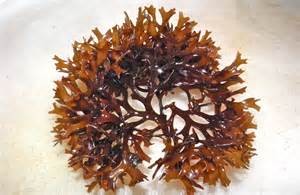The Danger of Carrageenan in Pet Food

The other day I was walking down the pet supply aisle of my local supermarket. I wasn’t going to buy pet food, I was picking up some kitty litter. And as typical of a pet supply aisle, the shelves were stacked with rows of canned and dried cat and dog foods. All the well known brands. Then something came over me and I picked up a can of dog food (I don’t even have a dog), turned the can around to the back and took a look at the ingredients. Nothing has changed. It’s still full of crap: denatured meat proteins, plant proteins, starch, preservatives, synthetic vitamins and minerals…and, carrageenan.
“Carrageenan?” I exclaimed in a low voice.
Then I picked up a different brand of dog food, and a third, and a couple of canned cat food, and they all also contained carrageenan, sometimes with the word “seaweed” in parenthesis (like it’s real food or something). Well, it certainly is “something.”
Some of you may wonder what is carrageenan and what’s wrong with a little seaweed in my pet’s food? Seaweed is healthy, right? Well, not exactly…
What Is Carrageenan?
Carrageenan (CGN) is a substance processed from specific species of red seaweed Chondrus crispus (also known as Irish Moss). In its undegraded form, CGN is used by the food industry to improve the texture of food products by acting to thicken, stabilize, or emulsify dairy products, salad dressings, infant formulas, processed meat, soy milk, and other food products, such as, pet food.
If you read the ingredient labels of packaged food sometimes you’ll see the actual word “carrageenan” or it’ll be hidden behind the words “thickeners” like in some yogurt, ice cream, and luncheon meat products. Be advised: not only is it found in processed food, but carrageenan is also used in some organic/health foods sold at your local Health Food Store Read More.
Carrageenan in it’s degraded form is used in personal care products, such as, toothpaste, cosmetics, shampoo, skin creams, and even non-personal use, such as, fire fighting foam and air freshener gels.
NOTE: Degraded and undegraded carrageenan are both high-molecular-weight polysaccharides. However, the food grade undegraded CGN weighs more.
Carrageenan Is Seaweed
Carrageenan has been widely used in the food industry for the past 80 years as a vegetarian substitute for gelatin. However, using seaweed as a food additive is not a new idea. As far back as 600 AD, the seaweed Gigartina was used as a food thickener in China. In Ireland, Irish Moss was the seaweed of choice in 400 AD (and is still used today).
Today, most of the world’s commercialized red seaweed is cultivated and harvested in the Philippines. The seaweed is then dried out and sent to a carrageenan manufacturer in China. Here, the seaweed is alkalized in a hot solution of 5% to 8% potassium hydroxide, which enables carrageenan aka sulphated polygalactan to be extracted. The Chinese then export it to the US and European markets.
So, What’s The Problem with Carrageenan?
Well…
Clinical studies have shown that when carrageenan was injected in low doses of 5mg/kg into lab animals the immune system became dysfunctional. The T-lymphocytes—also known as T-Cells which plays an important role in cellular immunity—was severely depressed. It was also observed that 18-hours after ingesting CGN the animals resistance to the bacteria Listeria monocytogenes was lowered, which caused an overgrowth of the bacteria in the peritoneal cavity (the fluid-filled gap between the wall of the abdomen and the organs contained within the abdomen).
Joanne K. Tobacman, M.D., who is an associate professor of clinical medicine at the University of Illinois College of Medicine, has spent twenty years studying the effects of carrageenan on human health. And, she has published 18 peer-reviewed papers on her findings. And what did she find? That the consumption of small amounts of undegraded carrageenan can be linked to colonic ulcerations and gastrointestional neoplasms. In other words, Inflammatory Bowel Disease and stomach and colon cancer.
Also, the effects of carrageenan-induced inflammation are not limited to the intestine, and when laboratory mice are exposed to low concentrations of carrageenan in their water for 18 days, they develop profound glucose intolerance and impaired insulin action. These responses are precursors of diabetes, which is associated with activation of the innate immune pathway that carrageenan stimulates. ~ Dr. Tobacman
As a matter of fact, CGN is so good at causing inflammation that it is given to lab animals to induce IBD in order to test new anti-inflammatory drugs.
Because of these above findings, the EU has restricted CGN in certain foods, such as, baby formulas. And, the Cornucopia Institute is petitioning to have CGN removed from organic health foods. But does that mean its OK to be in processed foods for both human and pet consumption? Not if you care about your health. I have even seen carrageenan listed in milk replacement products for puppies and kittens. Yikes! Not exactly something you want to give to a baby animal with a delicate stomach.
In Conclusion
If you haven’t switched your carnivore pet to a homemade species appropriate diet yet, then it’s important to read those ingredients on the back of pet food products. However, if you’re interested in switching your cat/dog from a commercial diet to a raw meaty bone diet and don’t know how to begin, I do offer consultations.










